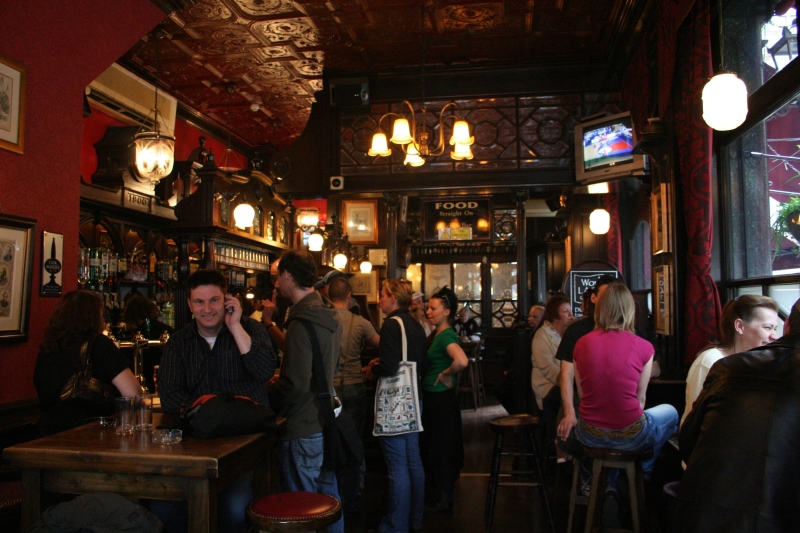Acoustic capacity: Why restaurants reduce noise

In our blog, we already talked about how restaurants implement work automation systems (for example, Jowi ), google visitors and implement design approaches to creating menus . In addition, we touched on the topic of noise levels in institutions.
People go to cafes and restaurants for communication, which means that the noise level should be acceptable for a quiet conversation. But how to achieve this?
Lombard effect
A typical situation - a company of people sits in a restaurant and enjoys great food and drinks. Pleasant music plays in the background, communication goes on as usual. However, soon the gathering participants begin to raise their voices - otherwise the interlocutors will no longer be able to hear each other. And so do the visitors at every table.
As a result, the general buzz in the room is growing, and each of those who are in it is talking louder and louder. This phenomenon is called the Lombard effect .
In the previous article, we compared the noise level in decibels and the source that could publish it in real life. Let’s refresh the numbers:
- 60 decibels - the sound of ordinary conversation, a safe level.
- 70 decibels - this is how the washing machine sounds, safe level.
- 80 decibels - the sound of a busy highway, still a safe level.
- 85-90 decibels - approximately equal to a powerful lawn mower, when exposed to hearing organs for 8 hours a day, there may be problems.
- 95 decibels - a motorcycle, when exposed to such noise for 8 hours a day there will be problems.
- 100 decibels - equivalent to working snowmobiles, risk when exposed for 2 hours a day.
- 110 decibels is a rock concert, and 30 minutes is enough for problems.
At the same time, experiments show that in some establishments the noise level can reach 86 decibels (with peaks up to 97 decibels) - this means that their guests simply risk their health.
Sometimes noise is used to prevent visitors from taking their seats for too long (in such establishments, as a rule, the cuisine is not the best), however, good restaurants strive to create a comfortable environment for their guests.
Where does the noise come from
In cafes and restaurants, the general noise consists of background music, sounds of cooking and, most importantly, conversations of visitors. The overall “contribution” of a particular source to the overall noise accompaniment is determined by its volume and reverberation time (gradual decrease in sound intensity). If the reverberation time is high, then the disappearance of the unwanted sound lasts longer.
Accordingly, in rooms with high reverberation times it will be noisy. At the same time, a higher noise level creates even more unwanted sounds, which also contribute to the overall volume level. This means that people who are not participating in a particular conversation will still hear it, which may be undesirable for them.
Therefore, to maintain a comfortable environment, the number of guests simultaneously in the room should not be higher than normal. However, for a restaurant this is an undesirable solution - fewer guests, which means less profit.
What to do restaurants
Bapacoustics specialists in a blog post provide the following information: the maximum number of people who can be indoors while maintaining a comfortable noise level is called acoustic capacity. It is calculated according to the following formula:
Акустическая Емкость = Объём пространства / (20 * Время реверберации)As mentioned above, reducing the number of guests in a room is not the best solution for a restaurant, so you should think about increasing the acoustic capacity. This can be done with the help of special sound-absorbing elements. Below is a 3D model of a restaurant without such elements:

Suppose the picture above shows a room with a wooden roof, concrete floor and plasterboard-lined walls. The floor area is 165 square meters, and the ceiling height is 4 meters. In this case, the acoustic capacity of the room will be 25 people.
In turn, if you use sound-absorbing panels placed on the ceiling and walls, the reverberation time can be reduced from 1.2 seconds to 0.5 s, and the acoustic capacity will increase from 25 to 66 people.

The difference in noise level is audible clearly - on the first record the room is not equipped with absorbing elements, and on the second - with them.
Such innovations are not cheap - in the previous article we gave an example of a restaurant that spent $ 30,000 on refurbishing. However, in the end, such efforts are worth it, because restaurants can receive more guests, and they themselves spend better time and then leave positive feedback on the Internet, which contributes to the influx of new customers.
